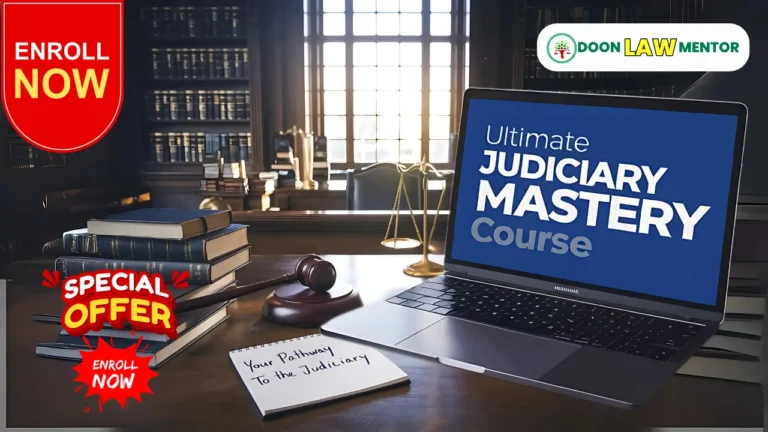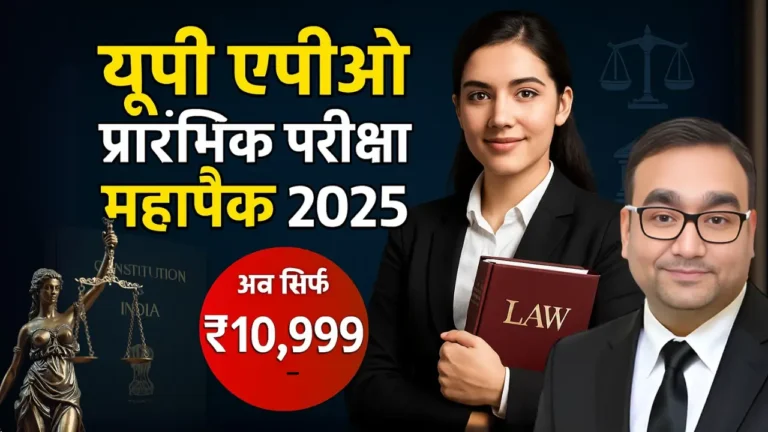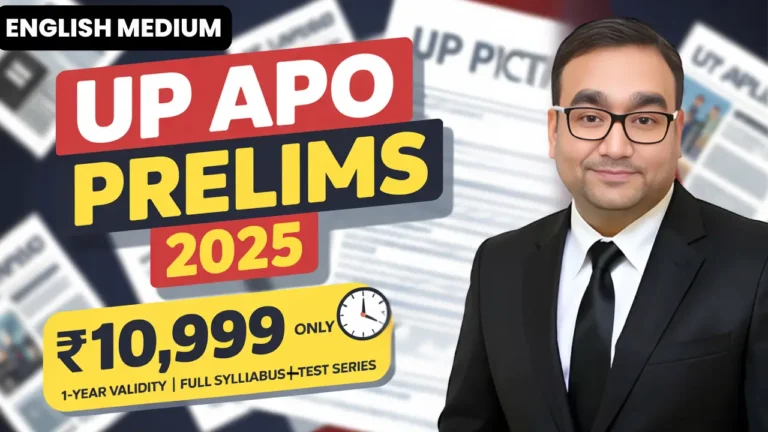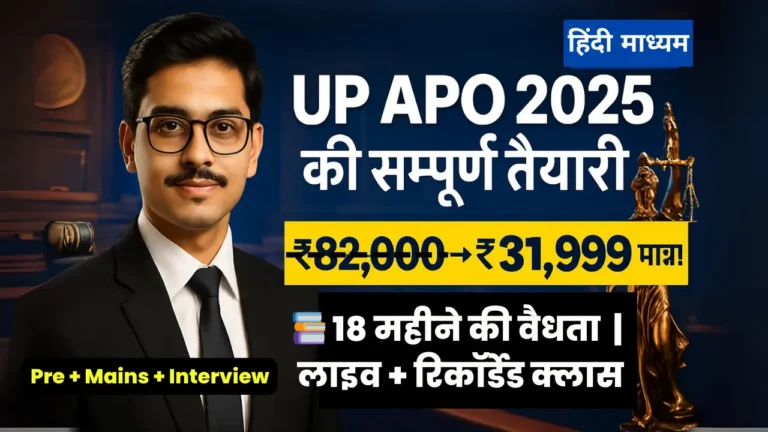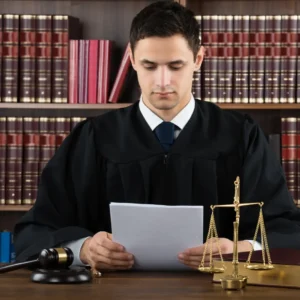Article 143 of the Indian Constitution grants the Supreme Court advisory jurisdiction, allowing the President to seek its opinion on matters of public importance. But can the Supreme Court refuse to answer? Is its opinion binding? Dive into this ultra-detailed blog to understand Article 143 explained, its history, landmark cases like the 2G Spectrum Reference, and the latest controversy over the President’s 2025 reference on Governors’ powers.
Table of Contents
Introduction: The Spotlight on Article 143
On May 17, 2025, Article 143 of the Indian Constitution is making headlines. The President of India has invoked this provision to refer 14 questions to the Supreme Court, seeking its opinion on the powers of Governors and the President to act on Bills. This move comes after the Supreme Court’s ruling in State of Tamil Nadu vs Governor of Tamil Nadu, a decision that reportedly displeased the Union Government. The Presidential Reference has sparked a political storm, raising questions about the scope of Article 143, the Supreme Court’s advisory role, and whether this reference is an attempt to revisit a settled judicial decision.
Article 143 empowers the President to seek the Supreme Court’s opinion on matters of law or fact of public importance. But can the Supreme Court refuse to answer? Is its opinion legally binding? And can Article 143 be used to challenge the Court’s own rulings? In this ultra-detailed blog, we’ll break down Article 143, explore its history through landmark cases, and analyze the implications of the latest Presidential Reference. Whether you’re a law student, a judiciary aspirant, or a curious citizen, this guide will help you understand this fascinating constitutional provision.
read More: Supreme Court’s Landmark Ruling on Court Managers Regularization: A Step Toward Judicial Efficiency
What is Article 143? A Simple Overview
Article 143 of the Indian Constitution gives the Supreme Court advisory jurisdiction, a unique power distinct from its usual role of deciding disputes between parties. Here’s what it says in simple terms:
- Clause (1): The President can refer a question of law or fact to the Supreme Court if it’s of public importance and the President thinks it’s necessary to get the Court’s opinion.
- Clause (2): In cases involving disputes under certain constitutional provisions (like those related to pre-1947 agreements between states), the President can refer the matter to the Supreme Court, and the Court must provide its opinion.
Unlike regular court cases (called “contested cases”), a Presidential Reference under Article 143 doesn’t involve a dispute between two parties. Instead, it’s a request for the Court’s advice on a legal or factual issue that impacts the public or the nation. Think of it as the President asking the Supreme Court, “What’s your expert opinion on this matter?”
Read More: UKPCSJ 2025 Notification Out: Uttarakhand Civil Judge Exam Details & Syllabus
The 2025 Presidential Reference: Why It’s Controversial
In 2025, the President referred 14 questions to the Supreme Court under Article 143(1), asking about the powers of Governors and the President to act on Bills. This reference comes on the heels of the Supreme Court’s judgment in State of Tamil Nadu vs Governor of Tamil Nadu, which apparently didn’t align with the Union Government’s views. The timing and nature of the reference have raised eyebrows:
- Political Controversy: Critics argue that the Union Government is using Article 143 to indirectly challenge the TN Governor ruling, which issued binding directions to the President.
- Legal Concerns: The Supreme Court has previously held (in the Cauvery Reference) that Article 143 cannot be used to revisit questions already decided by the Court. Since the TN Governor case settled the issues now being referred, is this reference permissible?
- Review in Disguise? Some see this as an attempt to seek a review of the TN Governor judgment through the backdoor, which could undermine judicial independence.
This controversy sets the stage for a deeper exploration of Article 143. Let’s dive into its key aspects, supported by landmark cases and legal principles.
Read More: Taj Trapezium Zone: SC’s ₹25,000 Fine Per Tree Explained with Forest Act & Article 142
Key Questions About Article 143
Let’s break down the most important questions about Article 143, using judicial precedents and expert opinions to provide clarity.
1. Can the Supreme Court Refuse to Answer a Presidential Reference?
Yes, the Supreme Court can refuse to answer a Presidential Reference under Article 143(1), but it must give reasons for doing so. Here’s what the Court has said in past cases:
- Special Reference No. 1 of 1964 (Keshav Singh Case): The Court held that it may “refuse to express its advisory opinion if it is satisfied that it should not express its opinion having regard to the nature of the questions forwarded to it and having regard to the other relevant facts and circumstances.”
- In Re the Special Courts Bill, 1978: The Court reiterated that it can decline to answer if it finds it “not proper or possible” to do so, but it must explain why. For example, the Court might refuse if the question is:
- Too vague or speculative.
- Purely political or socio-economic with no constitutional significance.
- Already decided by the Court in a binding judgment.
Real-Life Example: The only time the Supreme Court returned a Reference unanswered was in Special Reference 1 of 1993 (Ayodhya-Babri Masjid Dispute). The Court declined to answer, likely because the issue was highly sensitive, politically charged, and better suited for resolution through adjudication rather than an advisory opinion.
2. Is the Supreme Court’s Opinion Under Article 143 Binding?
This is a tricky question with two conflicting views:
- Majority View: Not Binding
- Ahmedabad St. Xavier’s College Society vs State of Gujarat (1974): The Supreme Court held that opinions given under Article 143 are not binding, though they carry “great weight and persuasive value.” The Court examined its earlier opinion in In Re Kerala Education Bill (1958) and clarified that since it was an advisory opinion, it wasn’t a binding precedent. Only decisions in contested cases (where the Court resolves a dispute between parties) are binding under Article 141 (which says the Supreme Court’s law is binding on all courts).
- Constitutional Expert H.M. Seervai: In his authoritative book on Indian constitutional law, Seervai agreed that Article 143 opinions are advisory and not binding law under Article 141.
- Practical Implication: While the opinion isn’t legally enforceable, governments and courts often follow it due to its persuasive authority.
- Minority View: Should Be Binding
- In Re the Special Courts Bill, 1978 (Justice Y.V. Chandrachud’s Opinion): Justice Chandrachud argued that an Article 143 opinion should be binding, especially when the Court issues it after hearing all interested parties (like in a regular case). He found it “strange” that a decision in a contested case between two parties binds all courts, but an advisory opinion—given after a thorough process—binds no one.
- Unresolved Debate: The same judgment noted that this question “may have to be considered more fully on a future occasion,” meaning the debate remains open.
Takeaway: As of now, the dominant legal position is that Article 143 opinions are not binding, but they carry significant moral and persuasive weight.
3. Can Article 143 Be Used as an Appellate Power Over Judicial Decisions?
No, Article 143 cannot be used to appeal or review a Supreme Court decision. The Court has been firm on this:
- Special Reference 1 of 1998 (Cauvery River Dispute): The Supreme Court clarified that Article 143 is not an appellate power over judicial decisions, including those of tribunals like the Inter-States Water Disputes Tribunal. The Court said:
- It cannot “sit in appeal” over its own decisions or those of other bodies through a Presidential Reference.
- Allowing such a use of Article 143 would mean the President could indirectly give the Supreme Court appellate jurisdiction, which the Constitution doesn’t permit.
- Review Power: The Supreme Court can only review its own decisions under Article 137 (review jurisdiction) and specific rules (Rule 1 of Order 40, Supreme Court Rules, 1966). Reviews are allowed only in exceptional cases, like when the original decision was:
- Made without considering key facts (per incuriam).
- Manifestly wrong and causes public mischief.
- Cauvery Reference Insight: The Court emphasized that Article 143 cannot be used to revisit a decision between the same parties. For example, if Party A and Party B litigate a case and the Supreme Court rules, the President cannot use Article 143 to ask the Court to reconsider that ruling.
Implication for 2025 Reference: The 2025 Presidential Reference on Governors’ powers might face scrutiny because the TN Governor case already settled these issues. The Supreme Court may view this as an improper use of Article 143 to appeal its own decision.
4. Can the President Refer a Question Already Decided by the Supreme Court?
No, the President cannot refer a question that the Supreme Court has already decided in its adjudicatory jurisdiction (i.e., through a binding judgment).
- Cauvery Reference (1998): The Court held that once it has pronounced an “authoritative opinion” on a question of law, that question is no longer in doubt (res integra). The President can only refer questions that the Court hasn’t decided.
- Example: If the Supreme Court has ruled on the powers of Governors to withhold Bills, the President cannot ask the same question again under Article 143.
- 2G Reference (2012): The Court added that it can refuse to answer a Reference if there’s already an “authoritative pronouncement” on the issue. Reasons for refusal include:
- The question is improper, inadvisable, or undesirable.
- It’s purely socio-economic or political with no constitutional significance.
- It’s incapable of being answered or serves no purpose.
2025 Controversy: Since the TN Governor case already addressed the powers of Governors and the President regarding Bills, the 2025 Reference might be seen as an attempt to re-litigate a settled issue, which the Supreme Court has ruled against in the past.
5. Can the Supreme Court Clarify or Modify Previous Judgments Under Article 143?
Yes, the Supreme Court can explain, clarify, or modify the legal principles (ratio decidendi) of its previous judgments while exercising Article 143 jurisdiction, but it cannot alter the final outcome of a case between parties. Let’s explore this through the landmark 2G Spectrum Reference (2012):
- Background: In Centre for Public Interest Litigation vs Union of India (2012), the Supreme Court canceled 122 telecom licenses issued in 2008, ruling that the government’s “first-come-first-serve” policy for spectrum allocation was arbitrary and unconstitutional. The Court also mandated that auctions were the only permissible method for allocating natural resources.
- Presidential Reference (2012): The Union Government, concerned about the broad policy implication of the auction mandate, sought a Presidential Reference (Special Reference No. 1/2012) to clarify whether auctions were the only method for allocating all natural resources across all sectors.
- Objection to Reference: Some argued that the Reference was invalid because it sought to re-agitate issues already decided in the 2G case.
- Supreme Court’s Response: The Court rejected this objection, holding that it can clarify or modify the legal principles of a prior judgment under Article 143, as long as it doesn’t interfere with the final outcome of the case (e.g., the cancellation of the licenses).
- Key Ruling: The Court clarified that “auctions are not the only permissible method for disposal of all natural resources across all sectors and in all circumstances.” This softened the 2G judgment’s broad mandate without touching the license cancellations.
- Precedents for Clarification:
- Keshav Singh Case (1964): The Court revisited its earlier ruling in Pandit M.S.M. Sharma vs Shri Sri Krishna Sinha and corrected an interpretation of a prior case (Gunupati Keshavram Reddy vs Nafisul Hasan).
- Second Judges Case (1998): The Court clarified its earlier ruling in Supreme Court Advocates-on-Record Association vs Union of India regarding the transfer of judges.
Takeaway: Article 143 allows the Supreme Court to refine legal principles from past judgments, but it cannot change the final decision in a case (e.g., who won or lost).
Relevance to 2025 Reference: The 2G Reference precedent suggests that the Supreme Court might entertain the 2025 Reference if it’s only seeking to clarify the TN Governor ruling, without altering its binding directions. However, if the Reference is seen as an attempt to review or reverse those directions, the Court may refuse to answer, citing the Cauvery Reference principle.
Historical Use of Article 143: A Journey Through Landmark References
Article 143 has been invoked several times since India’s independence. Here’s a quick look at some key Presidential References:
- In Re Kerala Education Bill (1958): The President sought the Supreme Court’s opinion on the constitutionality of certain provisions of the Kerala Education Bill. The Court provided an advisory opinion, but later clarified (in St. Xavier’s) that it wasn’t binding.
- Keshav Singh Case (1964): The President referred questions about the powers of state legislatures versus courts, arising from a dispute in Uttar Pradesh. The Court answered, clarifying earlier rulings.
- In Re the Special Courts Bill (1978): The President asked about the constitutionality of a proposed bill to set up special courts for emergency-era offenses. The Court answered, but Justice Chandrachud raised the debate on whether such opinions should be binding.
- Ayodhya-Babri Masjid Reference (1993): The President asked if a Hindu temple existed at the disputed site before the Babri Masjid. The Court declined to answer, citing the issue’s sensitivity.
- Cauvery River Dispute (1998): The President sought the Court’s opinion on the Cauvery Water Disputes Tribunal’s decision. The Court refused to answer, saying Article 143 cannot be used to appeal a judicial decision.
- 2G Spectrum Reference (2012): As discussed, the Court clarified that auctions aren’t the only method for allocating natural resources, refining its earlier 2G judgment.
These cases show that Article 143 is a powerful tool for seeking clarity on constitutional matters, but its use is carefully guarded by the Supreme Court to protect judicial independence and integrity.
The 2025 Reference: A Constitutional Dilemma
The 2025 Presidential Reference on Governors’ and President’s powers over Bills raises unique challenges:
- Conflict with Cauvery Reference: The Cauvery Reference clearly states that Article 143 cannot be used to revisit a question already decided by the Supreme Court. Since the TN Governor case settled these issues, the Reference might be deemed improper.
- Binding Directions in TN Governor Case: The TN Governor judgment issued binding directions to the President. If the Reference seeks to challenge or modify those directions, it could be seen as an attempt to bypass the Supreme Court’s review process under Article 137, raising concerns about judicial independence.
- 2G Reference Precedent: On the other hand, the 2G Reference shows that the Supreme Court can clarify or modify legal principles from a prior judgment under Article 143, as long as it doesn’t alter the final outcome (e.g., the directions in the TN Governor case).
What to Watch For: How will the Supreme Court balance these precedents? Will it answer the Reference by clarifying the TN Governor ruling, or will it refuse to entertain it, citing the Cauvery Reference principle? This will be a significant constitutional development to follow.
Why This Matters for Law Students and Judiciary Aspirants
If you’re preparing for exams like the Civil Judge Exam (e.g., UKPCSJ 2025), understanding Article 143 is crucial:
- Syllabus Relevance: Constitutional law topics like the Supreme Court’s jurisdiction, advisory powers, and judicial independence are key for prelims, mains, and interviews.
- Case Law Knowledge: Landmark cases like Cauvery Reference, 2G Spectrum Reference, and St. Xavier’s are often cited in constitutional law questions.
- Current Affairs: The 2025 Presidential Reference ties into governance and federalism debates, which are relevant for UPSC and judiciary exams.
Conclusion: Article 143—A Tool for Clarity, Not Controversy
Article 143 of the Indian Constitution is a unique provision that allows the President to seek the Supreme Court’s wisdom on matters of public importance. However, as we’ve seen through landmark cases, its use is carefully limited:
- The Supreme Court can refuse to answer if the question is improper or already decided.
- Its opinions are generally not binding, though they carry persuasive weight.
- It cannot be used as an appellate power to challenge the Court’s own decisions.
- The Court can, however, clarify or modify legal principles from past judgments, as seen in the 2G Reference.
The 2025 Presidential Reference on Governors’ powers will test these principles. Will the Supreme Court see it as a legitimate request for clarification, or will it view it as an attempt to undermine its TN Governor ruling? As this legal drama unfolds, Article 143 remains a fascinating intersection of law, politics, and constitutional governance.
Call-to-Action
Stay tuned for updates on the Supreme Court’s response to the 2025 Presidential Reference! Share your thoughts on Article 143 in the comments below, and follow us for more legal insights. #Article143
FAQs
- What is Article 143 of the Indian Constitution?
Article 143 allows the President to seek the Supreme Court’s advisory opinion on questions of law or fact of public importance. - Can the Supreme Court refuse to answer a Presidential Reference?
Yes, the Supreme Court can refuse if the question is improper, already decided, or politically motivated, but it must give reasons (e.g., Ayodhya Reference, 1993). - Is the Supreme Court’s opinion under Article 143 binding?
No, it’s generally not binding (per St. Xavier’s, 1974), though it carries persuasive weight. However, Justice Chandrachud argued in 1978 that it should be binding. - Can Article 143 be used to appeal a Supreme Court decision?
No, Article 143 cannot be used as an appellate power over judicial decisions (Cauvery Reference, 1998). Reviews are only allowed under Article 137. - What did the 2G Spectrum Reference (2012) decide?
The Supreme Court clarified that auctions aren’t the only method for allocating natural resources, refining its earlier 2G judgment without altering the license cancellations.

